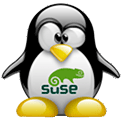@2011, Frank4DD
Introduction
Have you ever heard the phrase 'RTFM'? Well, you came to the right place. This site is dedicated to them and hosts several thousands pages of openSUSE Linux commands, daemons, libraries and format definitions. Why online? The web becomes the main source of information gathering, putting manpages there allows for user-friendly formatting and the inclusion of referenced information through links for a quicker follow-up. Sure, hitting control-C and typing the man command again is fast too, but then the system might not have all manpages installed, there is just a single terminal ... - chances are you have the browser open anyways for googling your way through life. There you go.
Man pages are the lifeline for any user trying to find its way throught the UNIX operating system jungle. Man pages attempt to to explain the various aspects of the operating system. In its most basic use, they can explain the syntax and options of commands to use. As old as UNIX itself, they are formatted in a archaic way using a troff typesetting system, optimized for display on ASCII terminals. They are organised into several sections, here is a list of the main ones:| Section | Content | Description |
|---|---|---|
| 1 | General commands | Section 1 of the manual describes user commands and tools, for example, file manipulation tools, shells, compilers, web browsers, file and image viewers and editors, and so on. All commands yield a status value on termination. This value can be tested (e.g., in most shells the variable $? contains the status of the last executed command) to see whether the command completed successfully. A zero exit status is conventionally used to indicate success, and a non-zero status means that the command was unsuccessful. (Details of the exit status can be found in wait(2).) A non-zero exit status can be in the range 1 to 255, and some commands use different non-zero status values to indicate the reason why the command failed. |
| 2 | System calls | Section 2 of the manual describes the Linux system calls. A system call is an entry point into the Linux kernel. Usually, system calls are not invoked directly: instead, most system calls have corresponding C library wrapper functions which perform the steps required (e.g., trapping to kernel mode) in order to invoke the system call. Thus, making a system call looks the same as invoking a normal library function. For a list of the Linux system calls, see syscalls(2). |
| 3 | C-library functions | Section 3 of the manual describes all library functions excluding the library functions (system call wrappers) described in section 2, which implement system calls. Many of the functions described in the section are part of the Standard C Library (libc). Some functions are part of other libraries (e.g., the math library, libm, or the real-time library, librt) in which case the manual page will indicate the linker option needed to link against the required library (e.g., -lm and -lrt, respectively, for the aforementioned libraries). In some cases, the programmer must define a feature test macro in order to obtain the declaration of a function from the header file specified in the man page SYNOPSIS section. In such cases, the required macro is described in the man page. For further information on feature test macros, see feature_test_macros(7). |
| 4 | Special files and drivers | Section 4 of the manual describes special files (devices). This means mainly /dev/* — device files and drivers. |
| 5 | File format and conventions | Section 5 of the manual describes various file formats and protocols, and the corresponding C structures, if any. |
| 6 | Games and screensavers | Section 6 of the manual describes all the games and funny little programs available on the system. |
| 7 | Miscellaneous | Section 7 of the manual provides overviews on various topics, and describes conventions and protocols, character set standards, the standard file system layout, and miscellaneous other things. |
| 8 | System administration | Section 8 of the manual describes commands which either can be or are only used by the superuser, like system-administration commands, daemons, and hardware-related commands. As with the commands in described section 1, the commands described in this section terminate with an exit status that indicates whether the command succeeded or failed. See intro(1) for more information. |
